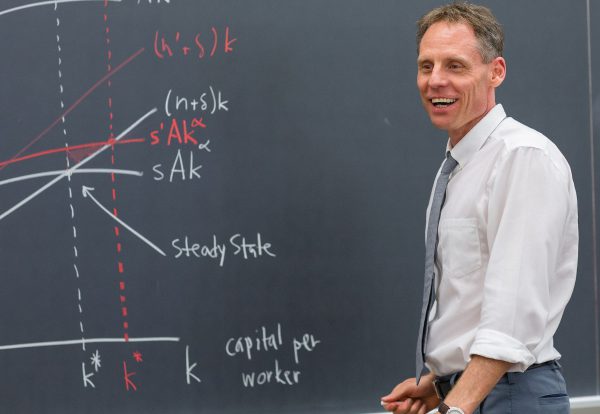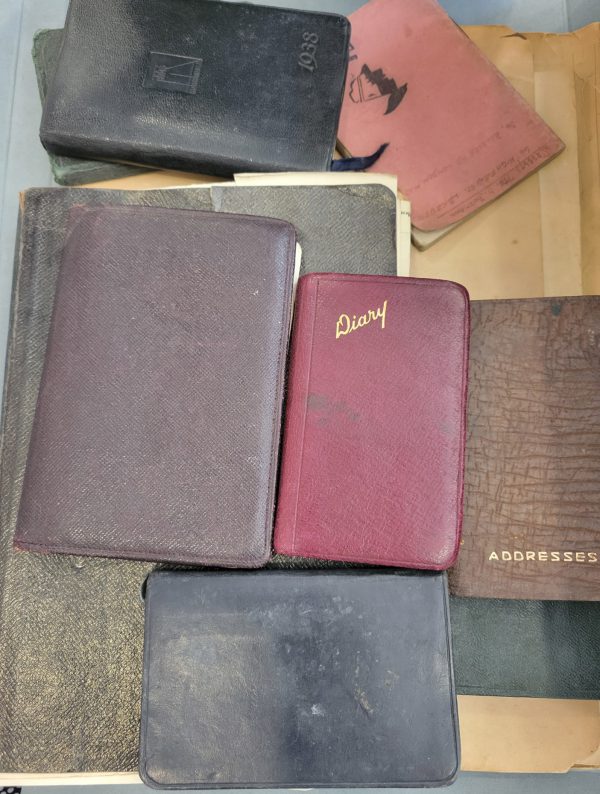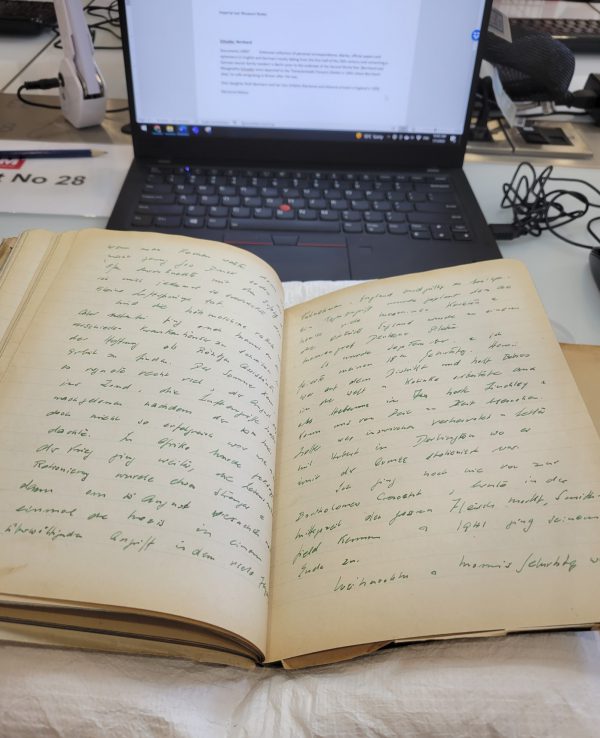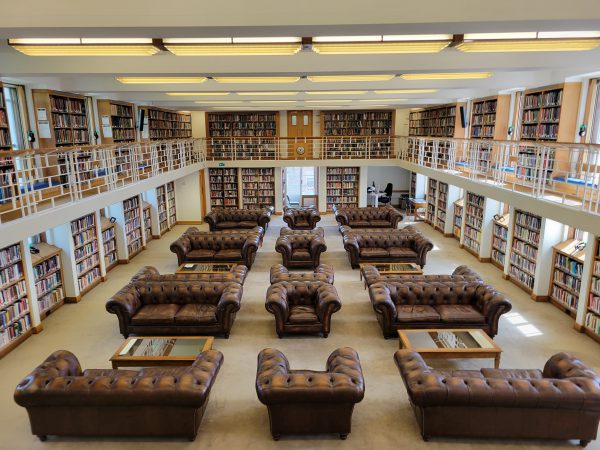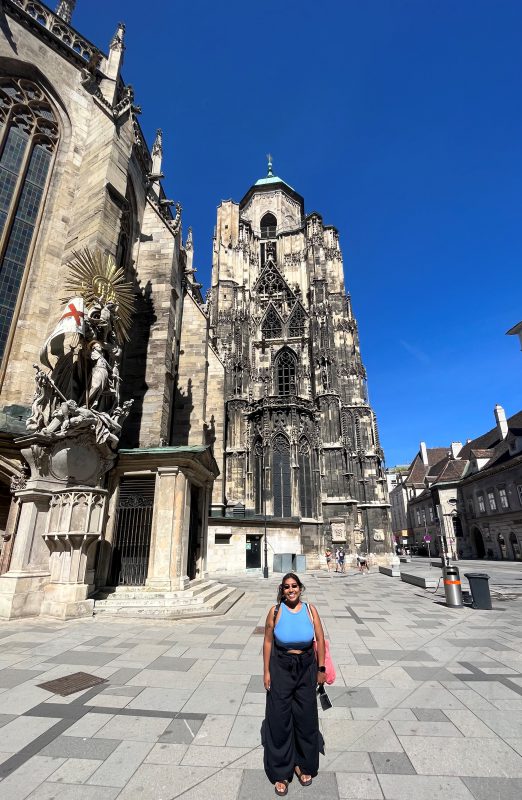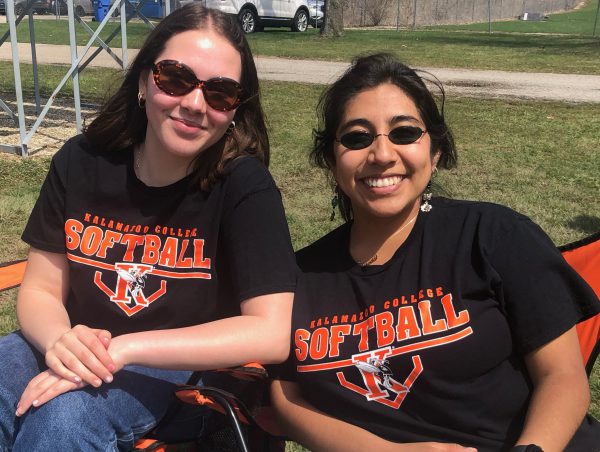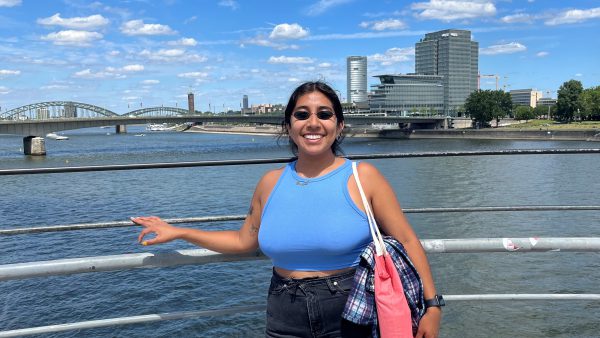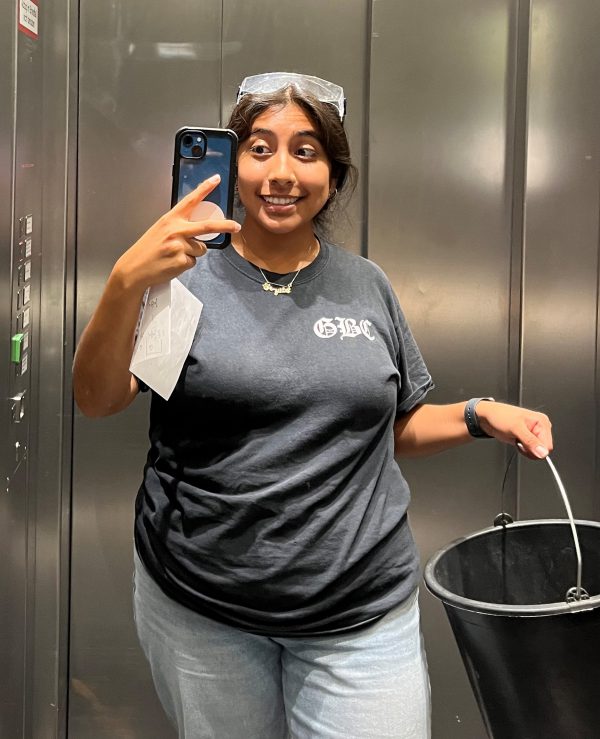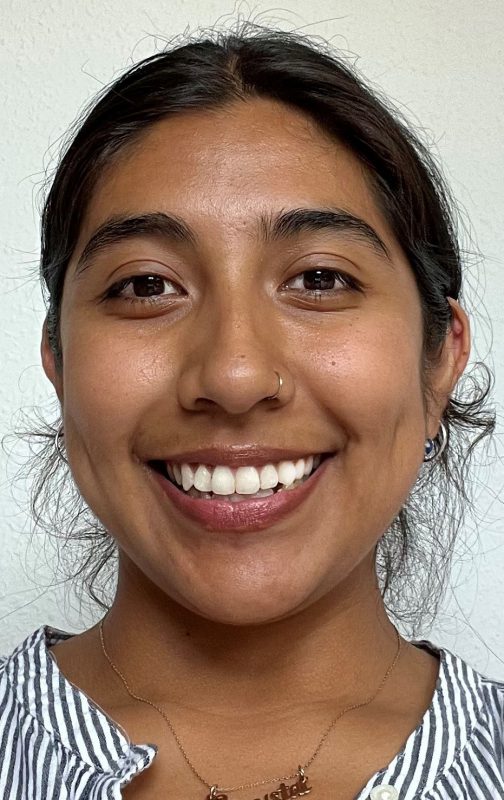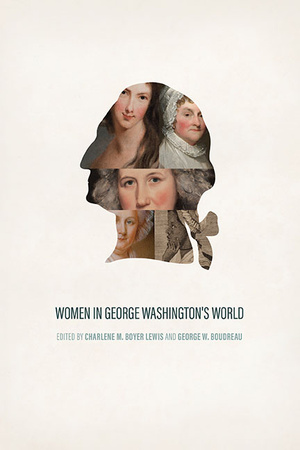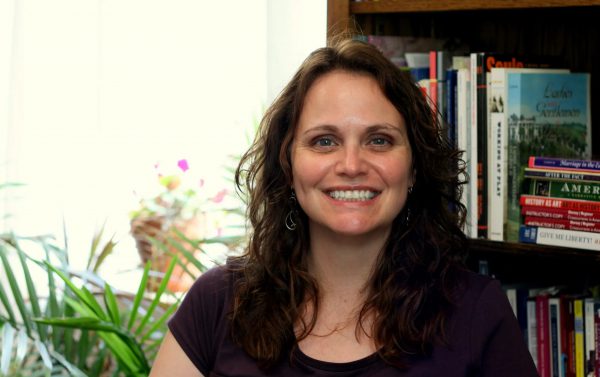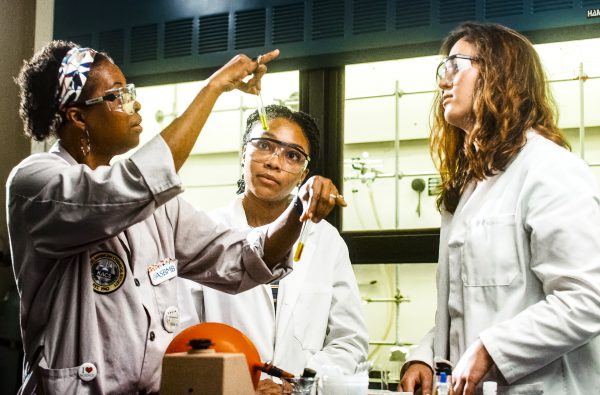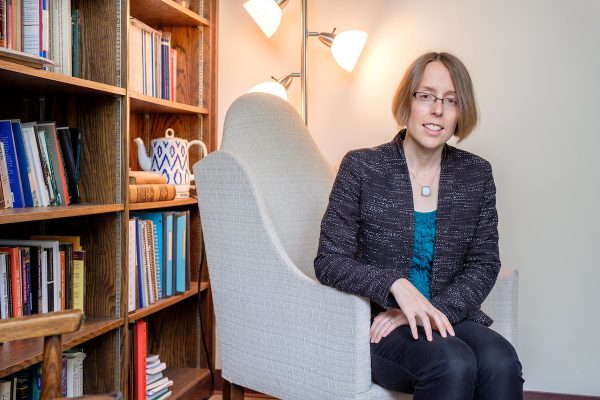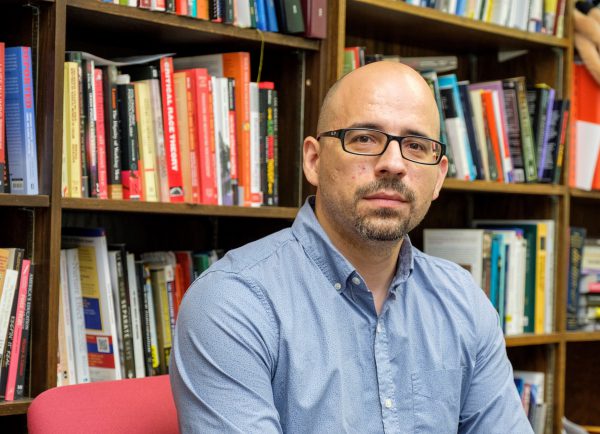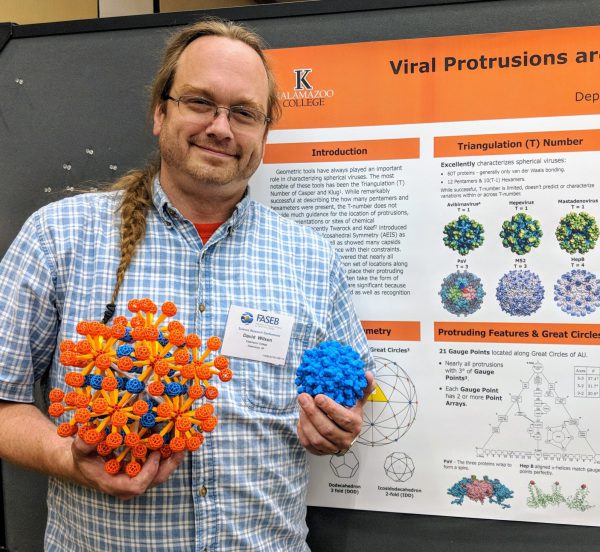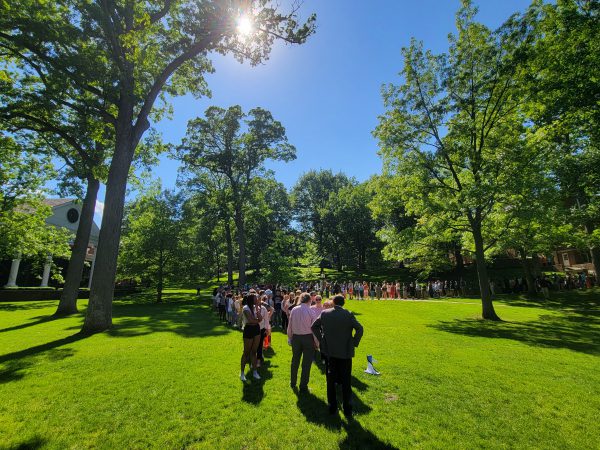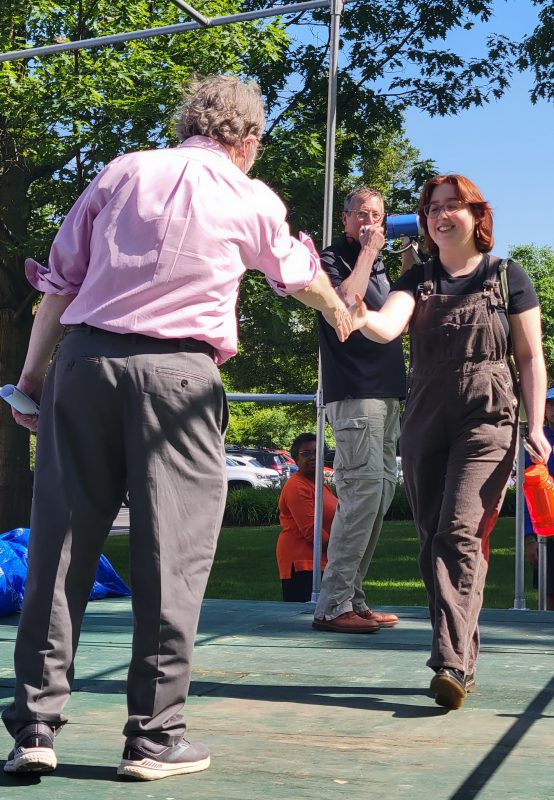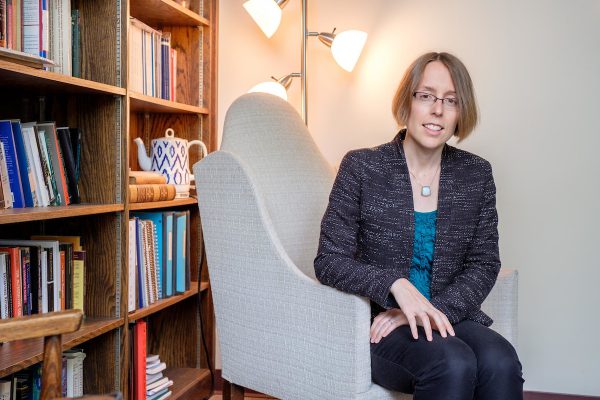
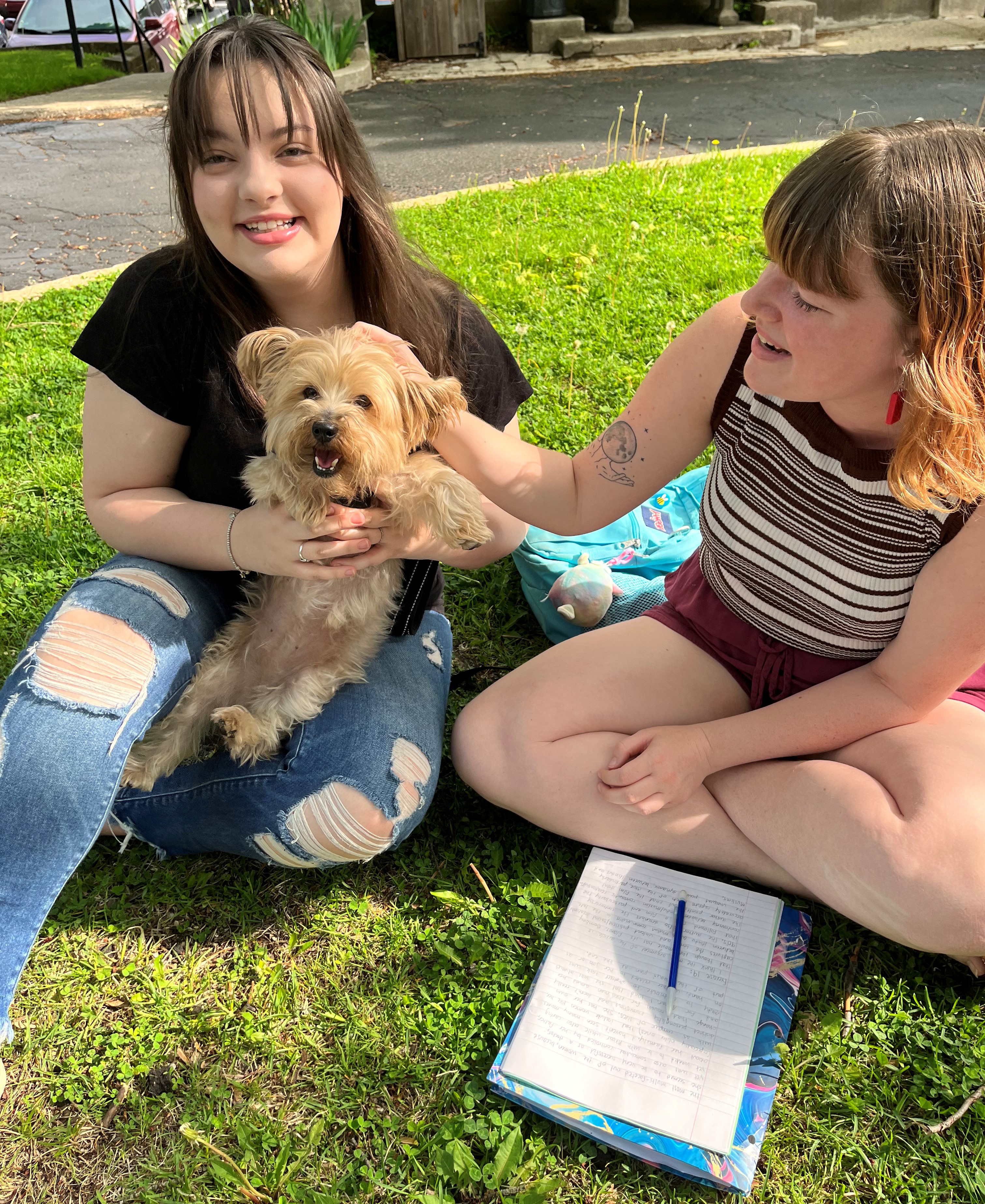
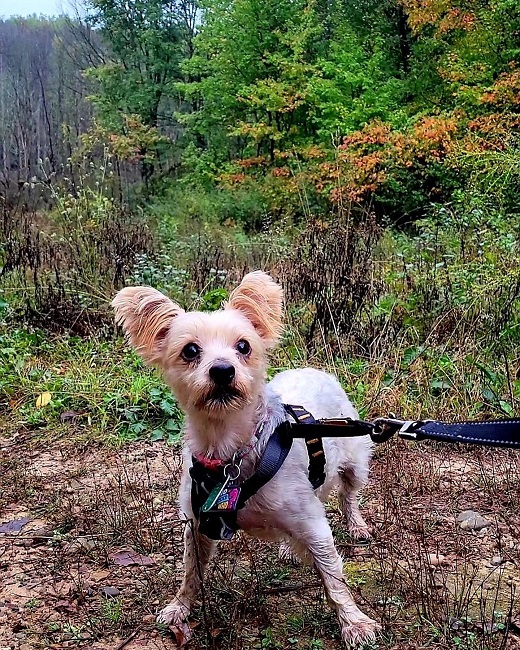
August 26 may be the officially designated day, but every day is International Dog Day for Sohini Pillai and her Yorkshire terrier, Leia.
Pillai, who is the assistant professor of religion and director of film and media studies at Kalamazoo College, adopted Leia two years ago in California. It was early in the COVID-19 pandemic and Pillai was cooped up at home writing her dissertation for her Ph.D. at the University of California, Berkeley.
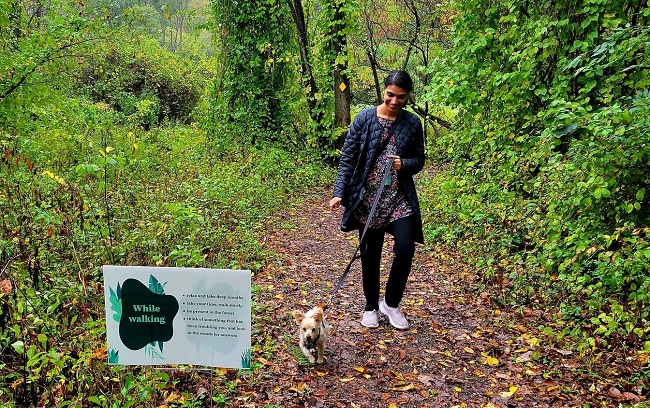
and Director of Film and Media Studies Sohini Pillai, poses along a mindfulness path in Lillian Anderson Arboretum.
“I grew up with a Labrador retriever, and he was wonderful,” Pillai said. “I am an only child and I asked my parents for a brother or sister or a dog, and eventually, they got me a dog.”
Originally, Pillai planned to get a dog when she got a job. Then she realized that adjusting to a new job, a new city and a new dog all at the same time could spell disaster. Maybe, she thought, this was actually the perfect time to get a dog.
Having lived with greyhounds during fieldwork in India, Pillai hoped to adopt a greyhound. However, she found herself sharing space with neighbors with dog allergies, so when she visited the shelter, she applied for hypoallergenic dogs.
“I think I applied for, like, 25 different dogs,” Pillai said. “During the pandemic, everybody wanted to adopt dogs because we were all at home. I’d never had a small dog before. She was the one who was available, and I met her, and even though she’s tiny, she really has a big dog personality.”
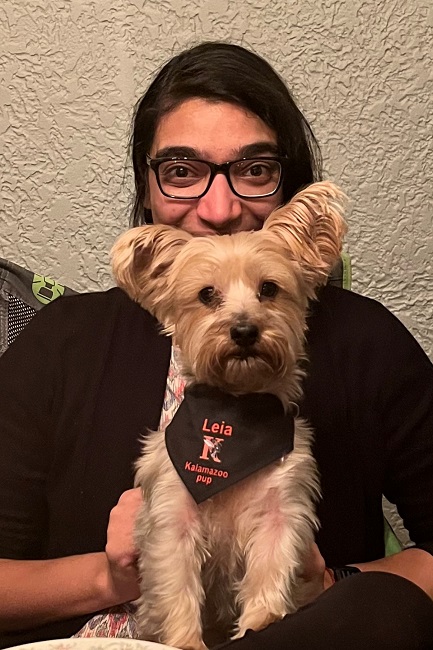
of Religion and Director of Film and Media Studies
Sohini Pillai and her Yorkshire terrier, Leia,
show off Leia’s K bandana.
Named for the Star Wars princess, Leia challenged the stereotypes Pillai held about Yorkies being loud and rude.
“She definitely barks and lets people know she’s there, but she’s so friendly with kids and other people,” Pillai said.
Leia became Pillai’s writing buddy. Weighing in at just 12 pounds and suffering from separation anxiety, Leia would settle on Pillai’s lap and sit with her the whole time she wrote. In addition to keeping her company, Leia forced Pillai to take regular breaks, to get outside and move, and even to realize she needed glasses when she noticed how fuzzy their early morning walks seemed.
“She’s made my life better in multiple ways,” Pillai said. “She’s made me a lot healthier and happier.”
Although she was used to a warm climate, Leia adjusted well to Kalamazoo when Pillai began teaching at K in 2021. Despite never having seen snow before that, she doesn’t mind snow on the ground. Falling snow or rain, however, is another story.
“She hates the rain,” Pillai said. “I have to put a raincoat on her, and she’s held her pee for 17 hours because she hates the rain so much. She doesn’t like things falling on her. She’s a bit of a diva or princess in that way.”
Other than the weather, Leia is thriving in Kalamazoo. She has enjoyed meeting neighbors, loves her local doggie daycare—where her best friend, Flower, is part hound and part boxer—and has made many friends among K faculty, staff and students.
She takes part in the religion department’s Sunday potluck dinners and regularly gets invited to other faculty gatherings and events. She has met several faculty members’ dogs—and even, once, a cat (through a screen door). She served as the model for photos of a forest mindfulness path in the Lillian Anderson Arboretum, created by K German students with Kathryn Sederberg, Lucinda Hinsdale Stone Assistant Professor of German Studies, in October 2021.
Leia has visited Lake Michigan, explored other outdoor activities in the Kalamazoo area, and loves to go for walks on K’s campus. Sometimes people recognize her from her social media presence, including her own Instagram account as @LeiaTheEwokPrincess. At doggie daycare, she has made friends with Tank, professor of chemistry and chair of the Department of Chemistry and Biochemistry Jeff Bartz’s dog, although Bartz and Pillai have yet to meet in person.
A huge Star Wars fan, Pillai teaches the saga in her Epic Epics course and mentions Leia fairly often in her classes. Her office is dotted with photos of Leia, including an image of her as Princess Leia and another of her as Brienne of Tarth, a Game of Thrones character.
In May, Leia got to attend two of Pillai’s classes when beautiful weather coincided with doggie daycare closing for a week. Pillai was returning from her Ph.D. graduation ceremony in California, where she received the news that her 100-year-old grandmother had passed away in India.
It was a difficult week for Pillai, who had been very close to her grandmother. Yet that day has been one of her favorite days at K.
“We sat outside and Leia was going around the circle and sitting in everybody’s laps,” Pillai said. “The students were holding her and cuddling her, and some faculty came out and met her, too. My students knew that my grandmother had passed away, and some of them brought condolence gifts, and it was really sweet and just the best day.”
Pillai is grateful for the circumstances that led her to Leia, on International Dog Day and every day.
“She’s living a pretty awesome life here,” Pillai said. “I’m jealous sometimes. She eats, she sleeps, she gets pets and cuddles, and she’s pretty popular. She’s got a lot of friends on campus.
“I can’t imagine life without her.”


